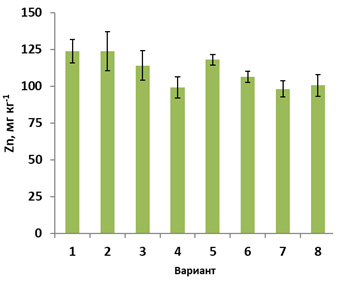Effect of potassium humates, xanthan gum and their combinations on the properties of soddy-podzolic soil in model experiments
DOI:
https://doi.org/10.31251/pos.v8i1.302Keywords:
biopolymers; humic substances; composite coatings; water resistance; heavy metals; contamination.Abstract
The aim of the study was to evaluate the effect of binary compositions based on the heterofunctional polysaccharide xanthan gum (XG) and three kinds of humic products (HP) on the anti-erosion, water-retaining and detoxifying properties of sod-podzolic soil in a series of model experiments, including those spiked with heavy metals (HM), and to identify the potential of these combinations as soil ameliorants in comparison with the individual polymers.
Location and time of the study. The study was carried out in model experiments in 2024 using the arable horizon of sod- podzolic sandy loam soil (Moscow region).
Methods. Four biopolymers were used: XG and three potassium humates (from lignite, peat and lignosulfonate), as well as their binary compositions. For soil treatment with polymer formulations two methods were used: spraying solutions onto the soil surface and mixing dry preparations with the entire soil volume. In a parallel series, soils were spiked with Cu, Zn, and Pb salts (150 mg/kg of each element). In soil-polymer mixtures, moisture retaining capacity, pH, С total, mobile forms of HM in acetate-ammonium buffer were determined. Phytotoxicity of soil-polymer mixtures was assessed in a biotest with Raphanus sativus.
Results. Treatment of the soil surface with formulations containing XG resulted in the formation of a structured composite layer of substrate particles linked together by polymer bridges. The introduction of HP into an aqueous solution of XG in the ratio biopolymer:humate = 2.5:1 or 1:1 did not affect the strength of the composite coatings. When applied at a rate of 1 g/100 g, both monocomponent formulations and binary compositions provided a stimulating effect on the test culture R. sativum. Binary compositions with XG did not show a better effect compared to individual polymers. Under the conditions of model contamination, among monocomponent formulations, the greatest decrease in the content of mobile Cu, Pb and Zn was found for humate from lignite (by 34%, 21% and 20% as compared with the control). Humates from peat and lignosulfonate alone turned out to be less effective, but in a binary composition with XG, their effectiveness in reducing the HM mobility increased by an average of 10%. According to the results of the phytotest in HM-spiked treatments, all the tested formulations exhibited protective properties, mitigating the toxicity of HM for plants.
Conclusions. The hydro-physical properties of soil-polymer mixtures were found to be determined by the xanthan gum, whereas chemical and biological properties were determined by humates. Xanthan gum can be considered as a promising ameliorant with a pronounced anti-erosion effect. In turn, humic products exhibited a biostimulating effect, bound heavy metals and provided a detoxifying effect of varying degrees depending on the composition and the organic matter source. In binary compositions, these effects did not show additivity, but were determined by the dominant mechanism of action. The choice of the optimal formulation as a soil conditioner for degraded soils should be determined depending the leading factor of soil degradation. Binary compositions are likely to have a complex effect, so their further studies in natural conditions are expedient.
Downloads

Downloads
Published
How to Cite
Issue
Section
License
Copyright (c) 2025 The Journal of Soils and Environment

This work is licensed under a Creative Commons Attribution 4.0 International License.






